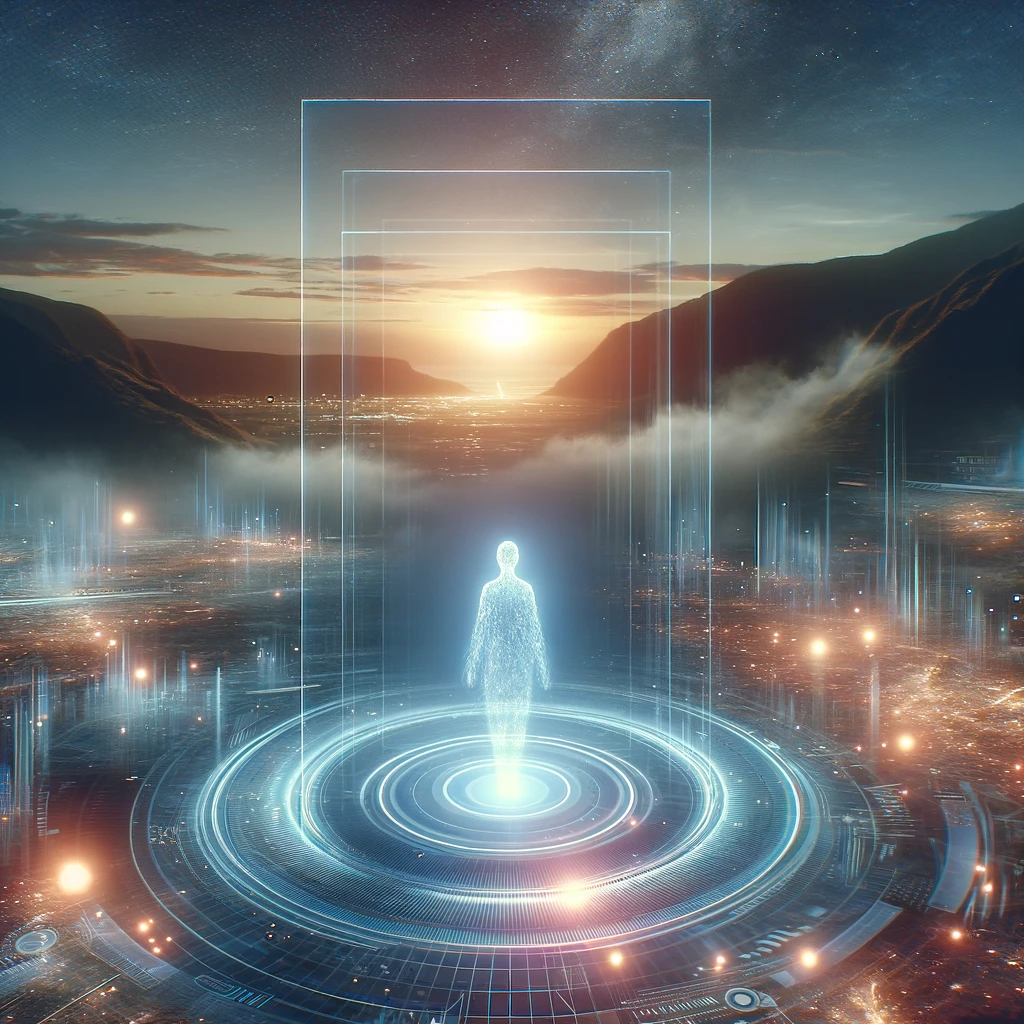“Digital necromancy” sounds like a futuristic fantasy, but it’s a tangible and increasingly present reality in our hyperconnected society.
This term, which could have been mistaken for black magic in ancient times, today refers to the ability of artificial intelligence to create interactions between the living and the dead, recreating the voices, images, and personalities of loved ones who have passed away.
In this article, we will explore how this technology is shaping our mourning, our memories, and our morals, questioning the boundaries between life and death.
As we delve deeper, it’s crucial to understand that digital necromancy is not just a testament to technological progress but also a reflection of our deepest human needs: to maintain connections, remember those we love, and perhaps find a new way to grieve in a digital age.
navegue pelo conteúdo

The Rise of Digital Necromancy
The journey of digital necromancy begins with the human desire to preserve the memory and presence of those who are gone. With the advent of social media, blogs, and other forms of digital media, we began to leave digital footprints that last beyond our physical existence.
Artificial intelligence has taken this digital presence to a new level, enabling the creation of almost tangible experiences with people who have passed away.
Pioneering projects have demonstrated the ability to recreate the voices of deceased individuals, allowing them to “speak” again through pre-recorded messages or even interactive conversations based on artificial intelligence.
Furthermore, advances in computer graphics and augmented reality have made it possible to visually recreate loved ones, offering an almost palpable digital presence.
The Technological Process Behind the Magic
The magic of digital necromancy lies in advanced algorithms and deep data processing. Using machine learning techniques, AI systems analyze vast amounts of voice and image data to learn and replicate specific speech patterns, facial expressions, and gestures. This section will explore the technical challenges, such as the need for large datasets and the complexity of capturing each individual’s unique essence.
Ethical and Moral Implications
As digital necromancy evolves, profound questions about its ethical and moral implications emerge. The ability to recreate aspects of deceased individuals brings to the fore issues of privacy, consent, and the emotional impact on the living.
Privacy and Consent: One of the biggest concerns is whether the deceased would have consented to the use of their image, voice, and personal data for such purposes.
In life, many do not explicitly express their wishes about post-mortem digital existence, leaving an ethical vacuum regarding the permissibility of these actions.
Emotional Impact: Digital necromancy can offer comfort to some by allowing “reconnections” with loved ones. However, for others, it may reopen emotional wounds or impede the natural grieving process.
The ability to “talk” to a deceased loved one may create emotional dependency, raising questions about the healthiness of this practice.
Cultural and Religious Aspects: Perspectives vary greatly among different cultures and religions. While some may view digital necromancy as a way to honor the memory of those who have passed, others may consider it a violation of natural or spiritual laws.
The Future of Digital Necromancy
The future of digital necromancy is both promising and uncertain. As technology advances, new applications may emerge, expanding the ways we interact with the memory of the deceased.
However, it is imperative that we proceed with caution, considering the ethical and emotional implications of this practice.
Technological Developments: AI and other technologies will continue to evolve, making experiences with digital necromancy even more realistic and immersive.
This could include advances in virtual and augmented reality, creating digital spaces where interactions with the deceased become even more tangible.
Regulation and Ethical Guidelines: Establishing clear regulations and ethical guidelines will be crucial to navigating the challenges digital necromancy presents.
This includes protecting the rights of the deceased, ensuring prior consent when possible, and considering the emotional well-being of the living.
Social and Cultural Impact: How societies and cultures incorporate digital necromancy into their mourning and memory practices will be key to determining the future of this technology.
Acceptance or rejection of this practice will reflect our attitudes towards death, mourning, and technology in the context of the human condition.
Continuing to develop the article in this manner ensures a comprehensive exploration of digital necromancy, covering its technological underpinnings, ethical debates, and potential future developments in depth.
Conclusion and Final Reflections
Digital necromancy confronts us with fundamental questions about the nature of existence, mourning, and memory. As we explore the capabilities of this technology, we are led to consider not just its technical implications but also the profound meaning of maintaining connections with those who have departed.
Balancing Innovation and Ethics: One of the greatest challenges we face is finding a balance between technological advancement and ethical consideration.
As a society, we must establish clear boundaries that respect both the memory of the deceased and the emotional well-being of the living.
The creation of a regulatory framework and ethical guidelines is essential to guide the development and use of digital necromancy in a responsible manner.
Embracing Technology with Compassion: As we move toward a future where digital necromancy becomes more prevalent, it is crucial that we approach this technology with compassion and sensitivity.
We must remember that at the heart of this innovation are the human desires to remember, honor, and, in some way, remain connected with those we love.
Reflecting on Grieving in the Digital Age: Digital necromancy also offers us a unique opportunity to re-examine and perhaps redefine our grieving practices.
In an era characterized by continuous digital presence, this technology can offer new ways to cope with loss, complementing traditional grieving processes with new approaches that reflect our connected reality.
In conclusion, digital necromancy is a complex and multifaceted phenomenon that challenges our traditional notions of mourning and memory. As we navigate this uncharted territory, we must do so with care, mindful of the profound eth
ical, emotional, and cultural implications involved. The key will be to advance in a way that honors both the memory of those who have passed and the needs of the living, finding new ways to celebrate life and memory in an increasingly digital world.
This in-depth exploration of digital necromancy has touched upon its technological foundations, ethical dilemmas, societal impacts, and the future prospects, aiming to provide a comprehensive understanding of this evolving phenomenon and its place in the digital age.














Leave a comment